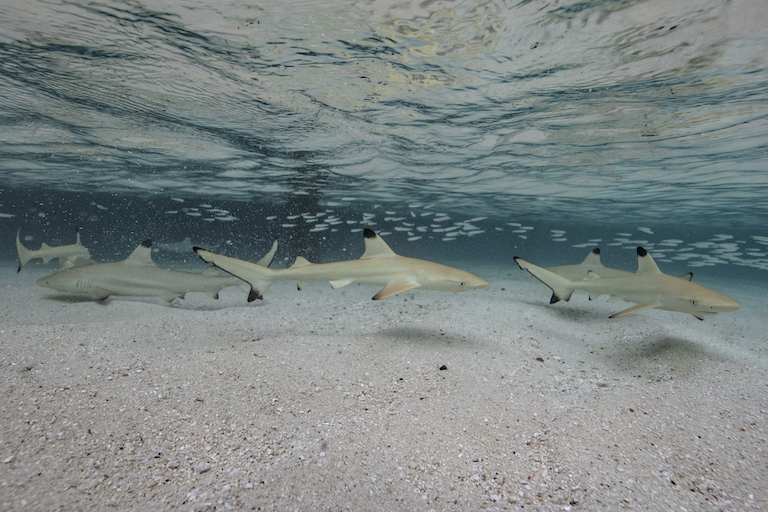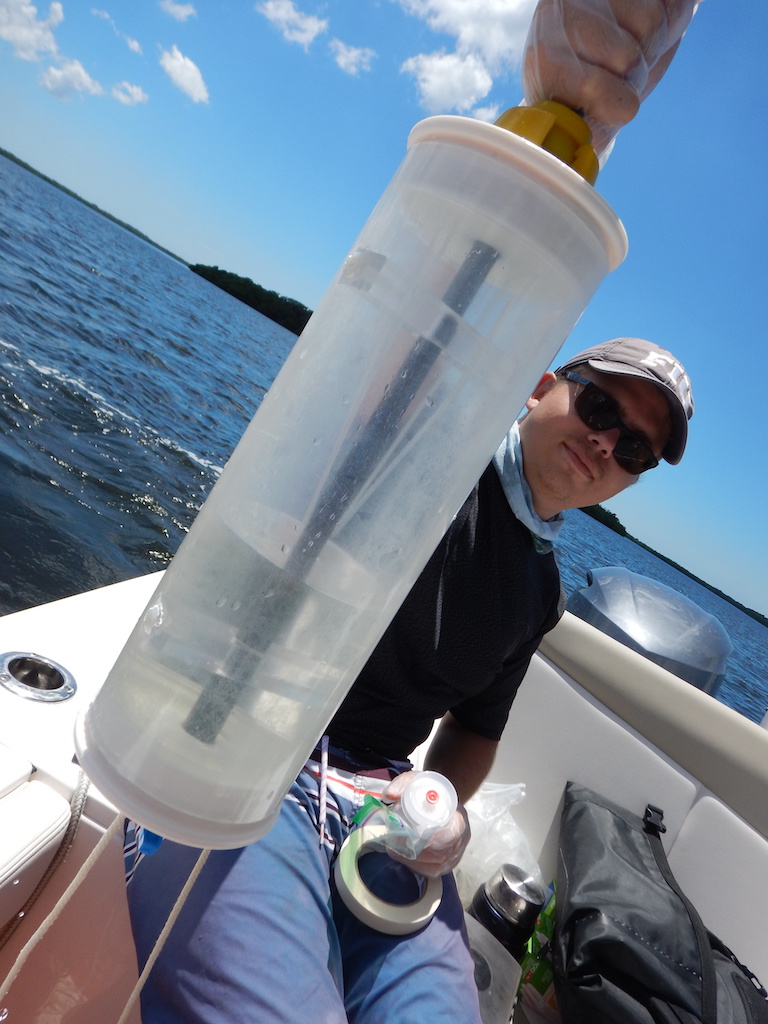- A new study has been able to identify the presence of blacktip sharks in the waters of Terra Ceia Bay in Florida through eDNA detection in water samples.
- The water samples contained more blacktip eDNA in the spring and summer months, which is when the species uses the bay as a nursery, and less eDNA in the fall, which is when the sharks start to leave the area.
- While the current technique indicates if sharks are present in the water, it isn’t sensitive enough to provide an accurate population count.
Two liters of seawater, or about half a gallon. That’s all that’s needed to detect the presence of sharks in the ocean, according to a new study.
A group of researchers from Florida International University (FIU), New College of Florida and Havenworth Coastal Conservation recently teamed up to develop a new method of detecting the presence of blacktip sharks (Carcharhinus limbatus) in Terra Ceia Bay, a semi-enclosed bay on the west coast of Florida. While many scientists rely on gill nets or longlines to conduct shark surveys, these researchers tested water samples for sharks’ environmental DNA, or eDNA. Like all animals, including humans, sharks constantly shed DNA in bits of skin, mucus, blood and even poop, and these fragments of genetic material can provide vital clues to a shark’s whereabouts.

“We detect whatever the animals leave in the environment,” lead author Bautisse Postaire, a postdoctoral researcher at FIU, told Mongabay. “You could detect everything, basically, except actual fresh tissue.”
When Postaire and his colleagues embarked on this study two years ago, he said he was initially doubtful it would yield accurate results.
“We were skeptical about how sensitive the method would be in detecting the temporal pattern of increases and decreases of blacktip shark abundance in the bay over the seasons,” Postaire said. “So, we were actually a little bit surprised that it worked this well, that the detections weren’t more random, but clearly followed the seasonal pattern consistently over two years.”
But eDNA doesn’t last for very long in the water. Things like bacteria, UV radiation, acidity will quickly break it down, causing it to dissipate within a few hours or a few days. But as co-author Judith Bakker says, eDNA’s transitory nature in water is actually quite beneficial.

“It degrades relatively fast,” Bakker, another postdoctoral researcher at FIU, told Mongabay. “The chances of finding it after a couple of hours or a couple of days are very small, which, as I said, is very helpful to us because the DNA that you detect at that moment means that the animal is there or has been there very very recently.”
Over a period of two years, the team took 58 water samples, and detected the presence of blacktips in 27 of the samples. The blacktip DNA was more abundant in the spring and summer, which is when they use the bay as a nursery. There was less DNA in the water in the fall, which is when the sharks start to leave the area.
The current method is not perfect, Postaire said. While it can reveal if sharks are present in the water, it is not sensitive enough to indicate a true population count. But a different, and more expensive, lab technique could help refine the results, he said.
Postaire, Bakker and their colleagues plan to continue developing this eDNA technique, honing its accuracy and speed.

“In the upcoming years, there will be more automated sampling so you basically have a glider going, sampling water, directly testing it for both presence and abundance,” Bakker said. “It will be a much faster, cheaper, more objective way of knowing what sharks are in the water and how many of them there are.”
Demian Chapman, co-author of the study and associate professor in the department of biological sciences at FIU, said this eDNA technique is another useful tool in monitoring world shark populations, which are under threat due to a number of human activities, including overfishing, shark finning, and pollution.
“While this is still an emerging technology with many potential pit-falls,” Chapman said in a statement. “It could provide a great deal of information on the presence of sharks in certain areas, especially if it is integrated into existing shark monitoring programs.”
Citation:
Postaire, B. D., Bakker, J., Gardiner, J., Wiley, T. R., & Chapman, D. D. (2020). Environmental DNA detection tracks established seasonal occurrence of blacktip sharks (Carcharhinus limbatus) in a semi-enclosed subtropical Bay. Scientific Reports, 10(1). doi:10.1038/s41598-020-68843-0
Banner image caption: Blacktip shark (Carcharhinus limbatus). Image by skeeze from Pixabay.
Elizabeth Claire Alberts is a staff writer for Mongabay. Follow her on Twitter @ECAlberts.
FEEDBACK: Use this form to send a message to the author of this post. If you want to post a public comment, you can do that at the bottom of the page.
